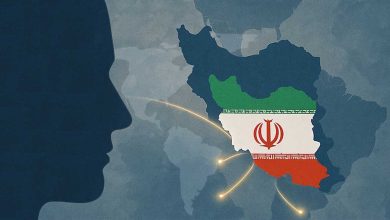
This analysis is based on the assumption that Iran has closed the strategic maritime passage of the Strait of Hormuz, regardless of whether it has the capability to do so. From this perspective, it examines the consequences of such an action, particularly on the global oil market.
The Strait of Hormuz is one of the most critical energy chokepoints in the world, through which a significant portion of crude oil and liquefied natural gas (LNG) is transported. If Iran closes this strait, it would have widespread implications for the global economy and energy markets.
Currently, approximately 17 to 20 million barrels of crude oil pass through the strait daily—accounting for about 20% of global oil consumption. Blocking this route would drastically reduce oil supply and could push global oil prices to unprecedented levels.
A drop in supply would naturally lead to higher prices. Some analyses suggest that in such a scenario, oil prices could soar to over $200–$300 per barrel. Countries like China, Japan, South Korea, and European states that depend heavily on Gulf oil would face serious energy crises. Rising oil prices would lead to increased transportation and production costs, resulting in global inflation.
Given the heavy reliance on the Strait of Hormuz, regional oil-exporting countries have taken steps to reduce their vulnerability:
-
The UAE has built the Habshan–Fujairah pipeline, capable of transporting 1.8 million barrels per day to the port of Fujairah on the Gulf of Oman, reducing its dependency on the Strait.
-
Saudi Arabia has the East-West Pipeline (Petroline), which can transport up to 5 million barrels per day from its eastern fields to the Red Sea port of Yanbu.
-
Iraq exports part of its oil through the Kirkuk–Ceyhan pipeline to Turkey, though this route has limited capacity (around 1.6 million barrels/day) and cannot fully substitute for the Strait.
-
Qatar, the world’s largest LNG exporter, ships nearly all its gas through the Strait of Hormuz and lacks alternative routes, making it highly vulnerable. Kuwait and Bahrain also rely almost entirely on this route for their oil exports.
In total, alternative pipeline routes are insufficient to compensate for the Strait’s closure. Even if Saudi Arabia, the UAE, and Iraq use their alternate pipelines, about 10 to 12 million barrels per day would still be blocked from reaching global markets. Hence, a closure of the Strait would trigger a major energy crisis and severe instability in the global economy. It’s also worth noting that overland alternatives involve higher costs, adding to transportation expenses and global inflation.
However, Iran’s closure of the Strait would likely trigger strong international reactions. The United States has repeatedly stated it would act to keep the Strait open and could resort to military intervention through its regional naval forces. It might also release oil from its Strategic Petroleum Reserve to mitigate shortages.
Countries like China and India, which heavily rely on Gulf oil, may seek alternative sources like Russia, but this shift could threaten their long-term energy security due to overdependence.
Russia, as a major oil exporter, could benefit from higher prices, but it may not welcome complete destabilization of the Gulf, given its extensive trade relations with Arab nations.
On the other hand, European countries, which have attempted to reduce their dependence on Russian energy, would face severe energy supply challenges if the Strait is blocked.
Although Iran is a regional military power and capable of disrupting oil tanker traffic, the closure of the Strait would have serious repercussions for Iran itself. It could trigger harsher Western sanctions, especially from the U.S. and EU, possibly including complete bans on its energy sector, asset freezes, and even targeted military strikes on Iranian infrastructure.
Such a move could spark military conflict between Iran and the West, especially the United States and its regional allies. Given the U.S.’s significant military presence in the Gulf, direct intervention to reopen the Strait is highly likely.
It’s important to note that Iran itself exports oil through the Strait of Hormuz. Closing the strait would further damage Iran’s already sanction-hit economy. The loss of oil revenue could lead to higher inflation, a devaluation of the rial, and worsening of domestic economic conditions—potentially fueling internal unrest.






